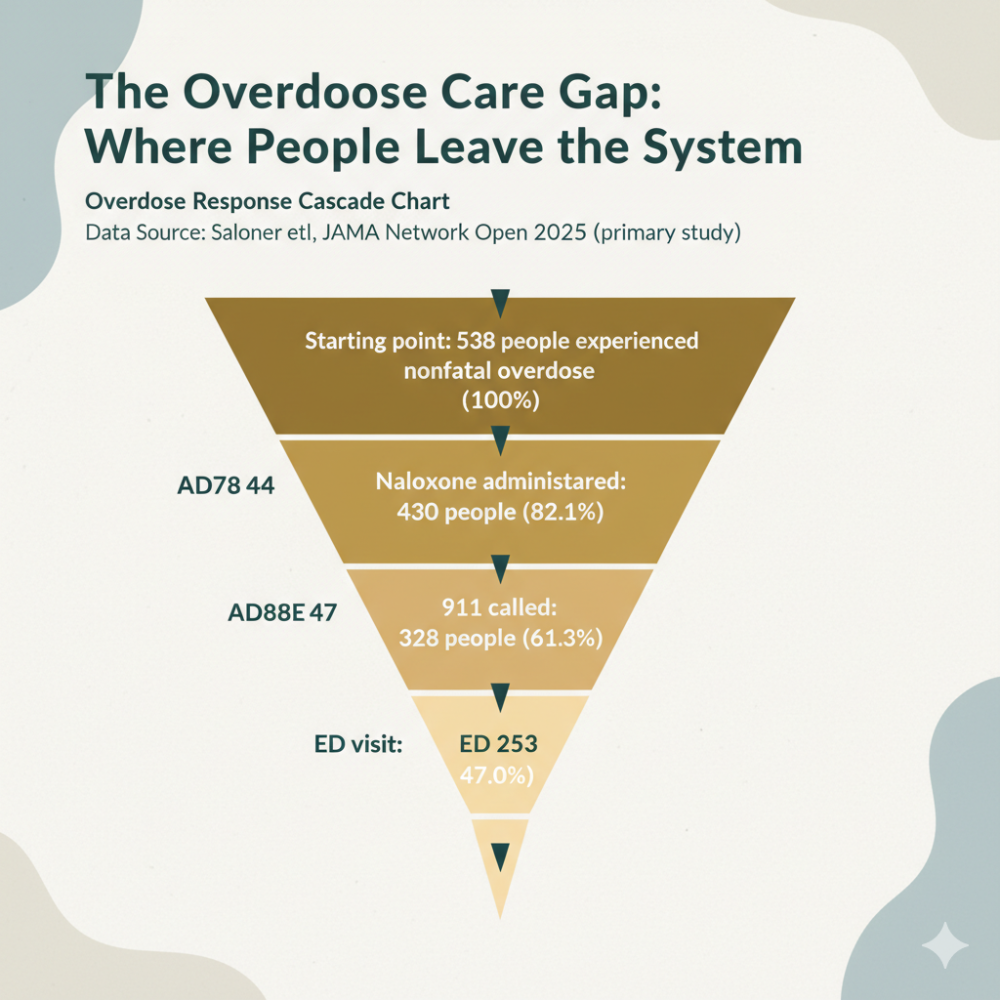Dangers of Combining Alcohol & Barbiturates
Risks of Mixing Alcohol and amobarbital (Amytal), secobarbital (Seconal), butabarbital (Butisol), pentobarbital (Nembutal), belladonna and phenobarbital (Donnatal), butalbital/acetaminophen/caffeine (Esgic, Fioricet), and butalbital/aspirin/caffeine (Fiorinal Ascomp, Fortabs)
In today’s world, it’s not uncommon for individuals to juggle multiple medications, sometimes complementing them with recreational substances. However, not all combinations are benign. One of the most dangerous mixtures involves alcohol and barbiturates, a class of drugs primarily prescribed for their sedative and anti-seizure properties. On their own, each possesses its own set of risks, but when combined, the danger magnifies exponentially. This article seeks to unpack the science behind this lethal combination, shedding light on why it’s essential to tread with caution and awareness.
What are Barbiturates?
Barbiturates, often referred to as “downers” in colloquial terms, are central nervous system depressants. They have been around for more than a century and have seen a wide range of uses, from medical treatments to recreational misuse.
Chemical Structure and Classification
From a chemical perspective, barbiturates are derivatives of barbituric acid. Based on their duration of action, they are typically classified into four groups: ultra-short acting, short-acting, intermediate-acting, and long-acting. The duration and intensity of their effects differ based on these classifications, influencing their specific medical applications.
Medical Uses and Therapeutic Benefits
In the medical arena, barbiturates have been employed for a multitude of purposes. Here’s a brief rundown:
- Anesthetics: Ultra-short-acting barbiturates like thiopental are used as induction agents in anesthesia, helping patients fall asleep before surgery.
- Anticonvulsants: Some barbiturates, such as phenobarbital, serve as anticonvulsants, aiding in the treatment of seizure disorders like epilepsy.
- Sedatives and Hypnotics: These drugs have historically been prescribed to treat sleep disorders (hypnotics) and anxiety (sedatives). However, their use has declined in recent years due to the development of safer alternatives.
- Veterinary Medicine: Barbiturates also find application in veterinary medicine, either for sedation or, unfortunately, for euthanasia.
Recreational Use and Misuse
Barbiturates’ ability to produce feelings of relaxation, calm, and even euphoria at higher doses has led to their recreational misuse. This is particularly dangerous, as the difference between a recreational dose and a lethal dose can be quite narrow – a phenomenon termed a low therapeutic index. Over the years, misuse has led to numerous cases of overdose and fatalities, especially when combined with other substances like alcohol.
Regulations and Control
Given their potential for abuse and the associated dangers, barbiturates are controlled substances in many countries. This means that their manufacture, distribution, sale, and use are under stringent regulations. In the U.S., for example, they are classified under the Controlled Substances Act, which mandates specific criteria for their prescription and dispensation.
Risks of Combining Alcohol and Barbiturates
When we consume substances like alcohol or barbiturates, they don’t merely pass through our system without impact. They interact with our brain and body in profound ways, and the mix can be treacherous. But how exactly do they function, and, more importantly, how do they interact?
How Both Affect the Brain
First, let’s break down their individual effects:
- Alcohol: Ethanol, the main active ingredient in alcoholic beverages, affects our central nervous system by increasing the production of gamma-aminobutyric acid (GABA), an inhibitory neurotransmitter. This leads to the depressive effects of alcohol, which can manifest as slowed reflexes, drowsiness, and impaired judgment.
- Barbiturates: Similarly, barbiturates also enhance the action of GABA in our brain. They prolong the opening of chloride channels on neurons, leading to hyperpolarization, which depresses nerve transmission. This results in sedative effects, reduced anxiety, and muscle relaxation.
Synergistic Depressive Effects
When alcohol and barbiturates are combined, their effects don’t just add up; they multiply. This synergistic interaction amplifies the depressive effects on the central nervous system. This is why a person combining these substances might experience intensified symptoms like extreme drowsiness, respiratory depression, and an increased risk of accidents or injury.
Metabolic Interactions
The liver plays a key role in metabolizing both alcohol and barbiturates. When taken together, they can overwhelm the liver’s enzymatic pathways, leading to slower clearance of these substances from the body. This can cause higher concentrations in the blood, prolonging and intensifying their effects and side effects.
Impairment of Cognitive and Motor Functions
Due to their depressive effects on the brain, the combination of alcohol and barbiturates significantly impairs cognitive and motor functions. This means that activities like driving, operating machinery, or even simple tasks can become hazardous. The individual may struggle with decision-making and reasoning and might experience poor coordination, increasing the risk of accidents.
Risk of Overdose
Given the synergistic effects and the narrow therapeutic window of barbiturates, combining them with alcohol significantly increases the risk of overdose. Symptoms can range from profound sedation and slowed breathing to coma and, in the worst-case scenario, death.
In essence, while alcohol and barbiturates each have their own distinct effects, their combination leads to an exponential increase in risks. This goes beyond a simple additive effect, making their co-consumption one of the most dangerous drug combinations in the realm of substance abuse.
Alcohol’s Interaction with Specific Barbiturates
Barbiturates, while sharing general traits, each have unique properties. When combined with alcohol, these drugs can have varying effects. Here are some specifics:
Risks of Mixing Alcohol and Amobarbital (Amytal)
- Interaction: When combined with alcohol, Amobarbital can lead to significant respiratory depression. This combination may also produce severe sedative effects, leading to an increased risk of accidents or injuries.
- Risk: Enhanced CNS depression, memory issues, impaired judgment, and potential overdose.
Risks of Mixing Alcohol and Secobarbital (Seconal)
- Interaction: Alcohol can amplify the sedative effects of Secobarbital, slowing down both the brain and body functions. This can lead to impaired coordination and severe drowsiness.
- Risk: Dizziness, difficulty in breathing, decreased motor skills, and potential for overdose when taken in excess.
Risks of Mixing Alcohol and Butabarbital (Butisol)
- Interaction: Alcohol increases the duration of Butabarbital’s sedative effects, which can lead to prolonged drowsiness and fatigue.
- Risk: Respiratory depression, impaired cognitive functions, and increased vulnerability to accidents.
Risks of Mixing Alcohol and Pentobarbital (Nembutal)
- Interaction: Pentobarbital, used primarily for its sedative effects, can see these effects exacerbated by alcohol, leading to profound sedation.
- Risk: Extreme sedation, lowered heart rate, decreased breathing, and a heightened risk of fatal overdose.
Risks of Mixing Alcohol and Belladonna and Phenobarbital (Donnatal)
- Interaction: The combination can lead to a dangerous decrease in heart rate and blood pressure, given the anticholinergic effects of belladonna.
- Risk: Potential cardiac complications, enhanced sedation, urinary retention, blurred vision, and dry mouth.
Risks of Mixing Alcohol and Butalbital/Acetaminophen/Caffeine (Esgic, Fioricet)
- Interaction: The risk here is tripled. While alcohol boosts the sedative effects of butalbital, it can also increase the potential liver damage from acetaminophen. Caffeine, on the other hand, has a stimulant effect that might give a false sense of alertness.
- Risk: Liver toxicity, increased sedation, the potential for overdose, and a deceptive sense of sobriety due to caffeine.
Risks of Mixing Alcohol and Butalbital/Aspirin/Caffeine (Fiorinal Ascomp, Fortabs)
- Interaction: Aside from the sedative interaction with butalbital, alcohol combined with aspirin can increase the risk of gastrointestinal bleeding. The presence of caffeine can counteract some sedative effects, leading to potentially risky behavior.
- Risk: Stomach bleeding, ulceration, increased sedation with potential for overdose, and diminished perception of intoxication due to caffeine.
It’s crucial to realize that while the specifics vary, the general theme remains consistent: mixing alcohol with any barbiturate amplifies the potential dangers, elevating risks to a life-threatening level in many cases. It’s always best to consult with a healthcare professional about the potential risks of any medication and substance interaction.
Prevention and Treatment
Understanding the risks associated with mixing alcohol and barbiturates is crucial. But equally vital is comprehending the strategies to prevent misuse and how to seek treatment if one becomes ensnared in the web of addiction.
Access Control and Monitoring
Limiting access to potentially harmful substances is a proven preventive strategy.
- Prescription Monitoring Programs: Implementing robust prescription monitoring can prevent over-prescription and flag potential abuse cases. These programs can track patients who may be doctor-shopping or using multiple pharmacies to get more than the advised dose.
- Safe Disposal: Ensuring safe and responsible disposal methods for unused or expired medications can prevent them from falling into the wrong hands.
Support Systems
Having a network of support can deter individuals from turning to substance misuse.
- Peer Counseling: People who have overcome addiction can play a vital role in helping others. Their personal stories can resonate and provide real-life insights into the perils of substance abuse.
- Family and Friends: Encouraging open conversations and ensuring that loved ones are informed can act as an early warning system. They can identify behavioral changes and intervene before things escalate.
Rehabilitation and Treatment Centers
Once addiction has taken root, specialized interventions are often required.
- Detoxification: This is the first step in the treatment journey, where the body is cleansed of the substances. Medical supervision is crucial during this phase due to potential withdrawal symptoms.
- Therapy and Counseling: Understanding the root causes of addiction, developing coping mechanisms, and building resilience are core to these therapeutic interventions. Both individual and group sessions can be beneficial.
- Medication: In some cases, medication may be prescribed to manage withdrawal symptoms, reduce cravings, or treat co-existing mental health disorders.
Community Reinforcement
Beyond individual treatment, a supportive environment can play a pivotal role in ensuring long-term recovery.
- Support Groups: Organizations like Alcoholics Anonymous or local community groups can provide a platform for sharing experiences and building a network of mutual support.
- Ongoing Education: Continued awareness and learning, even post-recovery, can reinforce the dangers of relapse and arm individuals with knowledge.
In summary, the battle against the dangers of mixing alcohol and barbiturates is multifaceted. It involves a combination of preventive measures, robust support systems, specialized treatments, and community reinforcement to truly make a dent in the problem. It’s a journey, but with the right resources and determination, it’s one that can be undertaken successfully.
Help is Available
Navigating the tumultuous journey of addiction, especially when it involves powerful substances like barbiturates and alcohol, can be daunting. But it’s essential to remember that you’re not alone. At Gallus Medical Detox Centers, we understand the intricate nuances of addiction, particularly when it pertains to alcohol and prescription medications. Our specialized, medically supervised detox programs are designed with care, empathy, and a depth of expertise that ensures the best start to your recovery journey.
If you or someone you cherish is grappling with addiction, don’t hesitate. Reach out to Gallus today, and let us help guide you back to a life full of promise, health, and well-being. Your path to recovery is just a call away. It’s never too late to seek help, and at Gallus Medical Detox Centers, we’re dedicated to being your beacon of hope. Contact us now.
FAQs
Why are barbiturates prescribed if they’re so dangerous?
While it’s true that barbiturates have the potential for misuse and can be dangerous when taken improperly or mixed with other substances, they do have legitimate medical uses. For instance, they can be effective in treating certain types of seizures or in inducing anesthesia. The key is that their use is closely monitored by healthcare professionals, and they’re typically prescribed when the benefits outweigh the potential risks.
Can a person overdose on barbiturates even without mixing them with alcohol?
Yes, it is possible to overdose on barbiturates even without combining them with alcohol. The therapeutic window (the difference between a therapeutic dose and a toxic dose) for barbiturates is narrow. This means that taking just a small amount more than the prescribed or recommended dose can lead to an overdose. Symptoms can include shallow breathing, sluggishness, confusion, and in severe cases, coma or death.
What should I do if someone I know has mixed alcohol and barbiturates?
If you suspect someone has mixed alcohol and barbiturates, it’s crucial to seek emergency medical attention immediately. This combination can lead to respiratory depression, which is life-threatening. While waiting for medical help, keep the person awake and monitor their breathing. Do not leave them alone.
Are there alternatives to barbiturates that are safer?
Yes, over time, alternative medications with a better safety profile have been developed. Benzodiazepines, for instance, are often used in place of barbiturates for anxiety and sleep disorders. They generally have a wider therapeutic window and are less toxic in overdose, though they still carry their own risks, especially when mixed with alcohol or other drugs.
How can I support someone in recovery from alcohol and barbiturate co-abuse?
Supporting someone in recovery is a multifaceted approach. Encourage them to stick to their treatment plan and attend therapy or support group meetings. Offer to join them or drive them to appointments. Ensure that their environment is free from triggers that might tempt them to use. Most importantly, be patient and understanding, as recovery is a long process with potential setbacks.
References
- Professional, C. C. M. (n.d.-b). Barbiturates. Cleveland Clinic. https://my.clevelandclinic.org/health/treatments/23271-barbiturates
- Skibiski, J. (2022, December 31). Barbiturates. StatPearls – NCBI Bookshelf. https://www.ncbi.nlm.nih.gov/books/NBK539731/
- Devenyi, P. (1971, February 2). Barbiturate abuse and addiction and their relationship to alcohol and alcoholism. PubMed Central (PMC). https://www.ncbi.nlm.nih.gov/pmc/articles/PMC1930792/
- The Controlled Substances Act. (n.d.-b). DEA. https://www.dea.gov/drug-information/csa
- Davies, M. (2003, July 1). The role of GABAA receptors in mediating the effects of alcohol in the central nervous system. PubMed Central (PMC). https://www.ncbi.nlm.nih.gov/pmc/articles/PMC165791/
- Baciu, T., Botello, I., Borrull, F., Calull, M., & Aguilar, C. (2015). Capillary electrophoresis and related techniques in the determination of drugs of abuse and their metabolites. Trends in Analytical Chemistry, 74, 89–108. https://doi.org/10.1016/j.trac.2015.05.011
- Stead, A., & Moffat, A. (1983b). Quantification of the interaction between barbiturates and alcohol and interpretation of fatal blood concentrations. Human Toxicology, 2(1), 05–14. https://doi.org/10.1177/096032718300200101
- Barbiturate intoxication and overdose: MedlinePlus Medical Encyclopedia. (n.d.). https://medlineplus.gov/ency/article/000951.htm
- Amytal Sodium (amobarbital) dosing, indications, interactions, adverse effects, and more. (n.d.). https://reference.medscape.com/drug/amytal-sodium-amobarbital-100005
- Butabarbital: MedlinePlus drug information. (n.d.-b). https://medlineplus.gov/druginfo/meds/a682417.html
- Pawson, P., & Forsyth, S. F. (2008). Anesthetic agents. In Elsevier eBooks (pp. 83–112). https://doi.org/10.1016/b978-070202858-8.50007-5
- Donnatal Uses, Side Effects & Warnings. (n.d.). Drugs.com. https://www.drugs.com/mtm/donnatal.html
- Esgic Uses, Side Effects & Warnings. (n.d.). Drugs.com. https://www.drugs.com/mtm/esgic.html
- Fioricet Uses, Dosage, Side Effects & Warnings. (n.d.). Drugs.com. https://www.drugs.com/fioricet.html
- Acetaminophen, butalbital, and caffeine: MedlinePlus drug information. (n.d.). https://medlineplus.gov/druginfo/meds/a601009.html


 Steve B
Steve B 
